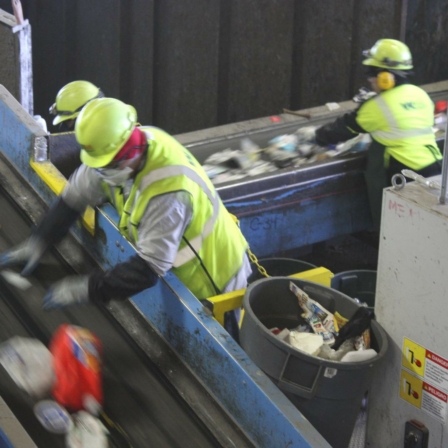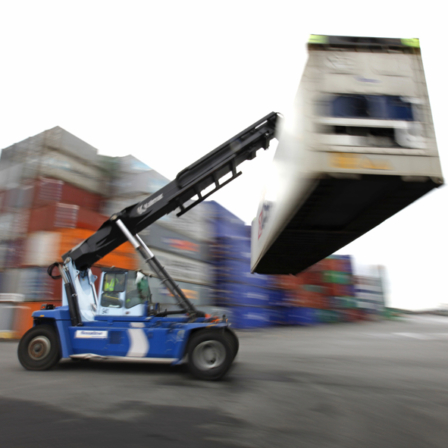Smart takeaways from Global Cleantech Forum in San Francisco by Jyri Arponen, Sitra
Resource and energy challenges have never been greater. Drought and storm conditions have never been more worrying. And this is predicted to be only the beginning. If we continue business as usual, we will do drastic harm to ourselves and the generations to come. We need a shift from the traditional business mindset driven solely by growth and profit to one that is underpinned by conserving natural resources and cutting emissions. In fact, business as usual is killing our planet and we now urgently need new low-carbon innovations and resource efficient technological solutions. We need them to help us address the complex challenges that we are increasingly facing with clean water, energy, transportation, waste and raw materials.
The cleantech industry evolved to tackle these challenges. Although being highly promising, the cleantech cluster suffers today from its purely technology-driven focus. Instead of concentrating on optimising processes to improve energy and water efficiency, dematerialisation and biodiversity, the cleantech industry will not become a true game changer unless companies alter their business models as well. Companies need to rethink their revenue models and transform their core businesses to alter existing markets and create new ones.
Combining new technologies with competitive business strategies and smart market entries is the only way to make a successful turnaround from a conventional business to a more sustainable one. This is easier said than done. Here are nine key rules I learned from the Global Cleantech Forum in San Francisco last March that are important for any listed company or SME that seeks to grow stronger in providing sustainable solutions.
1. Start with the people who have done it
2. Define and communicate your role in the business ecosystem
3. Engage with social networks
4. Prove your sustainable business case
5. Seek corporate venturing
6. Look for new investment models
7. Find the wow factor
8. Get yourself connected
9. Know the right people
Here is how you can apply these nine key rules on your way towards a more sustainable business:
1. Start with the people who have done it
A good way to start making a turnaround in your habits of thinking and doing business is to meet entrepreneurs and business developers who are already doing things in a new way. That is why deal-making conferences like Global Cleantech Forum in San Francisco are important to attend. Not only will you meet the most prominent startups, entrepreneurs and investors, but also the world’s best corporate strategists, innovators, sustainability leaders, technology buyers and solution providers. They are all there to co-design the next wave of growth, convinced that it can only be based on sustainability and a willingness to share their insights.
2. Define and communicate your role in the business ecosystem
Industrial symbiosis – where, for example, one company’s waste is another’s resource – is a model for a new way of doing business. Although the term industrial symbiosis is not commonly used in the USA, the principle of sharing unnecessary resources is widely recognised as an essential element of corporate sustainability. Top global brands like Coca-Cola, Ford, Heinz, Nike and Procter & Gamble all have sustainable resource sharing partnerships up and running with other companies to save money and to improve their environmental footprint.
US companies are good at crystallising their revenue models, creating client-centric business models and articulating the customer value they provide. This is why they are sharp at specifying their role in industrial or business ecosystems. This means they are very clear in defining the added value of such ecosystems when discussing them. We should learn to do the same. In fact, we should think harder about how resource efficiency really affects our businesses, what added business and social value it provides, and how to make it a true market differentiator – not to speak about its potential to reshape our national competitive position abroad.
3. Engage with social networks
In a finite world of energy and resources, the convergence of data, social, and mobile applications is already changing the way we do business. New digital applications are able to crunch big data, unite communities of interest, prevent waste, and motivate individuals to conserve natural resources. New web-based platforms will make a meaningful impact on the world’s environmental problems and truly change the ownership model towards a more distributed, efficient, social-based way of allocating goods. Companies must engage with social networks and discover new web and IT solutions, such as e-waste and cloud services, to stay up to speed and create competitive business strategies.
4. Prove your sustainable business case
We are in the transition period to a post-carbon economy, and the change is expected to last for quite a long time, extended by the contemporary boom in shale gas. However, there are two dimensions that can make even the most conventional businesses more sustainable today.
First, the need for safer and more ecological upstream operations and resource efficiency in industrial processes will continue to grow. This stresses the value of industrial symbiosis with integrated high-technologies and IT.
Second, companies need to change the way they do business. For this to happen, we need concrete case examples of innovative solutions that conventional companies have created in order to convince others to follow.
A good example is the world’s largest retailer and private employer Wal-Mart. It has two million employees and its stores save working families more than US$2,500 per year. With its sheer size and influence, Wal-Mart’s energy or environmental innovations make an immediate and profound impact. We can see signs of this kind of turnaround in Finland, too, especially in bio-based process industries. The biggest driver is always the market – the customers. The rule here is that the business will always change when the business case is strong enough.
5. Seek corporate venturing
As we continue to operate within an uncertain global financing landscape, we need new sources of financing. On a global level, new opportunities and models are emerging for innovative financiers who look to limit risks. While many investors have been scared off by the lack of short-term returns, the world’s largest energy, industrial and even retail companies are making bold commitments to cleantech and sustainable business. At the San Francisco conference GE, Johnson Controls, BP, Shell, Wal-Mart, Autodesk, BASF, Dow, HP, EMC, and a long list of others not only showed up to speak, but were also actively engaged in a dialogue. An accelerated participation of corporates and investors with new investing and venturing models is needed to raise the level of cleantech SMEs.
6. Look for new investment models
This is already a reality in Silicon Valley. “There is this vast amount of resources in the corporate world that has a desperate need to invest in innovation that the traditional venture model has not done a good job of tapping,” said Garage Technology Ventures Managing Director Bill Reichert to Silicon Valley Business Journal. Bill’s investment firm is matching up corporate investors and cleantech startups in a new programme that aims to invest between 20 and 40 million US dollars a year. “What we discovered in our conversations with corporates was that they are very eager to invest in innovation but they weren’t exactly sure how to do it in terms of getting to the earliest stages.”
7. Find the wow factor
In addition to new investment activities, we also discussed with Bill a lot about how startups can create the ‘wow effect’, catching the investor’s full attention. We wanted to hear more about how he supervises startups to pitch. Pitching is all about being convincing and expressing how your company really can make a competitive difference in the marketplace. Bill stressed that companies need cutting-edge business planning. While business canvassing is a good tool for determining your idea and revenue model, it does not turn you into a successful entrepreneur overnight. It does not refine a bad idea or make sustainable sexy, but is, after all, only a “seen before” concept.
“Contrary to the advice in articles on the topic, you do not need to explain the entire business plan in 250 words. Forget what everyone else has been telling you. You need to convey its essence, and its energy. You have about 30 seconds to grab an investor’s interest. You want to be clear and compelling.” Bill’s advice sounds good.
8. Get yourself connected
The most important thing is to engage yourself in open discussions with dynamic people in your business, people who are well connected and who know the key players. Once you have access to these, you can create new meaningful opportunities and gain new ideas. When you do this systematically, it will be easier to become a forerunner in energy and environmental innovation and make your move to the global market. A good example of this tactic is a grid sensor company called Smart Energy Instruments Ltd from Ontario. Their intelligent sensors can enable renewables integration, ancillary services, demand response and grid protection. These guys sell their ubiquitous measurement technologies nowadays to giants like Siemens and Hitachi.
9. Know the right people
Forerunners never claim their position all by themselves. Always find out who is the right person to help you make the turnaround happen. They are people like Rich Larsen. Rich is a senior business development and sales management executive working in the field of green technologies, including electric vehicle infrastructure solutions and solar power generation. He is a superstar in developing and building relationships with customers, partners, and investors, as well as influencing local governments and transportation policies. He is also a former mayor of Los Altos, and a very nice guy with whom it is fun to be connected.
So, when you try to get global, do not try to do it with “the usual suspects” – fellow Finnish companies. You need to do the right things with the right people. First, make your sustainable innovation the core business and redefine the value provided to customers. Then, get connected with the leading global entrepreneurs and corporations to learn from them. Do not underestimate the importance of making the effort to meet government leaders, investors and service providers who are shaping the sustainable business scene. I am not saying this is easy but these seem to be the new rules of the game. That is why you need to take action and be where the action already is. It is smart to start your turnaround with added value networks like www.cleantech.com. It is not the only one but it is one that really works.





Recommended